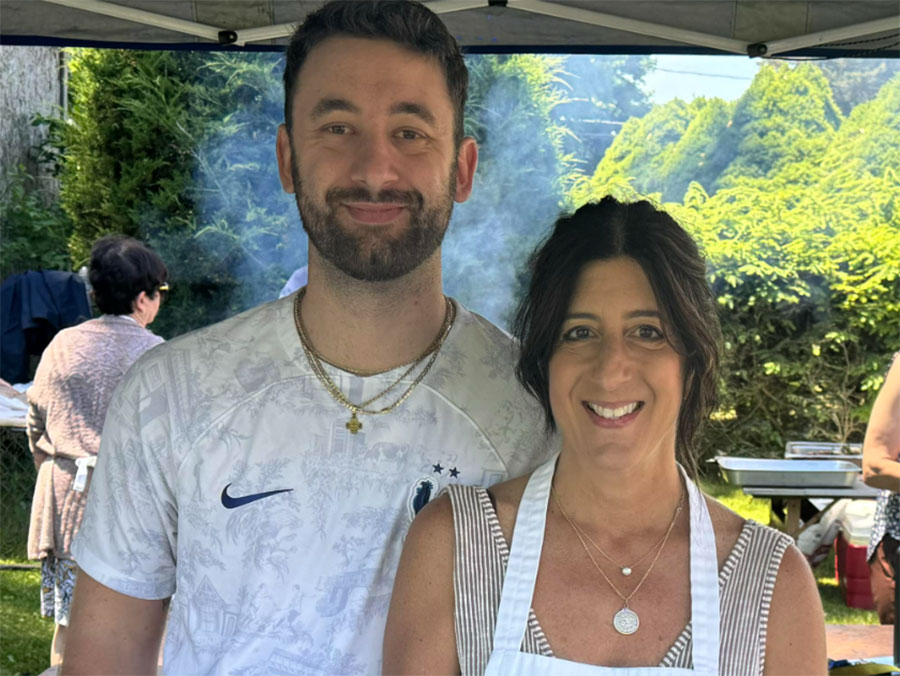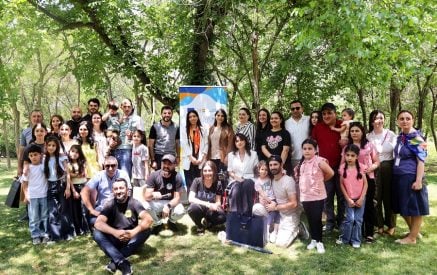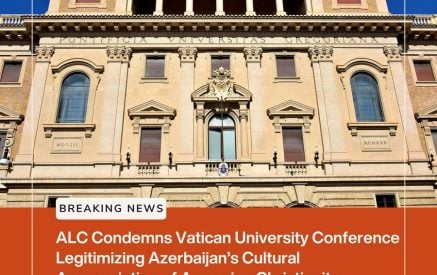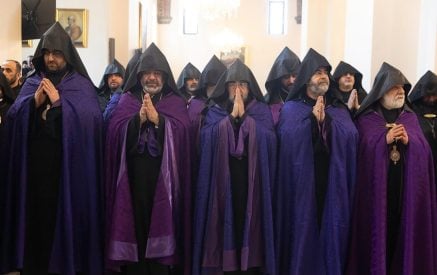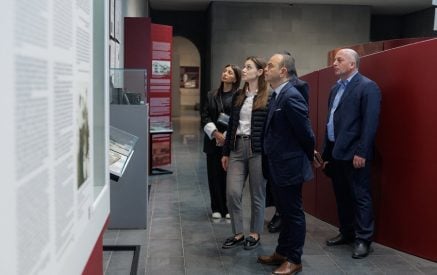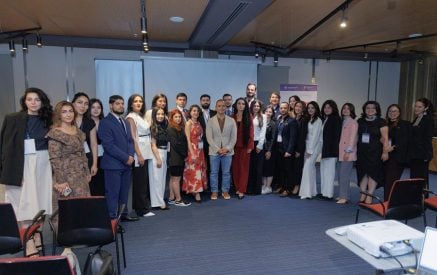Indeed life is fragile. On Father’s Day, a proud community celebrated with its traditional picnic on church grounds. That evening it lost two dear members to an unspeakable tragedy. Our reaction can only be described as speechless, as an entire community was frozen in shock. Certainly, we have heard of such senseless acts, but it was always a news item far removed from our peaceful existence.
We naturally become somewhat ambivalent toward such stories, perhaps evoking momentary human compassion that fades in the absence of personal knowledge. Those in the Armenian parish community of St. Gregory in Indian Orchard and the town of Wilbraham, Massachusetts knew the victims of this devastating tragedy. They were our friends, our relatives, our colleagues and fellow parishioners. They were our family. Sima Setian Pariseau and her son Dylan were not simply names associated with another horrific tragedy. They were people in our lives. They were loved and respected in our community by countless whose lives now contain a huge void.
The Setian family is a fourth generation founding family of the St. Gregory parish. Sima’s grandfather Nishan was an original member who worked with my grandfather to build the sanctuary in 1934. Her father Harry has been an iconic contributor to the church for his entire life and a personal mentor who I deeply respect. Her mom Liz has been a mainstay of the choir and church events since her marriage to Harry. I taught all three Setian children in Sunday School: Steve, Deacon Bedros and Sima. Sima was named after her morkouyr (mother’s sister), who was her grandmother’s sister and also my aunt from marriage. This bound the Setian and Piligian families together for eternity. Sima as a high school student was the teenage version of what she became as an adult. She was your best friend who loved life and was devoted to things she believed in. Sima was always an important part of the Armenian community, as she was a participant in Sunday School, Camp Haiastan and eventually became a leader in parish life. People who knew her always described her in a similar manner at all phases of her life…loyal, devoted, kind and caring.
Sima is remembered as someone defined by her family, her faith and her friends. She was the mother of two wonderful children, as reflected in their personable and caring character. Dylan grew up in the church with his sister Sophie and developed into a bright, personable and respectful young man. On the day of the tragedy, the community was together for the annual Father’s Day picnic. When my wife and I arrived, we were greeted at the food line by servers Sima and Dylan. They were smiling, happy and genuinely interested in seeing you. During the picnic, I was fortunate to talk with Dylan about his career and his life. He had established himself as a research assistant in the biotech/pharmaceutical industry, having worked for companies such as Moderna. I was so impressed with his enthusiasm, engaging personality and politeness. Sophie lives in San Diego and is very close to her family. I can see Sima in both children.
Read also
This past spring the parish celebrated the 90th anniversary of its founding. I had the opportunity to work with the committee, and it was so gratifying to see many former students in leadership positions in the parish. I was struck by the universal respect everyone had for Sima. It was clear she was deeply loved and admired by her peers. Her contributions were always impactful, because she was honest, direct, humble and deeply committed. The committee was not simply working on an activity; they truly enjoyed each other’s company. The most important experience in community life is when God’s work is accomplished in a joyful atmosphere. That was the value that Sima brought to her interests.
We should only speak of Sima and Dylan in the past tense when referring to the end of their earthly lives. We believe that they are in paradise in God’s heavenly kingdom, where all believers in our Lord Jesus Christ will be reunited one day. Sima and Dylan’s lives on earth ended tragically, but they are now resting in God’s kingdom, free of the challenges of earthly life. The raw pain of their loss, however, continues for their family, friends and community. How does a community handle such grief? What direction should it take? How do we move on? These are not simple questions, and there are no easy answers, as they relate to the very essence of human existence and the depth of our souls.
The answer for comfort and healing lies in our sense of community and faith. Community can be described as a fellowship with others who share common values and purpose. If we add “Armenian Christian” as descriptors to the term “community,” we begin to understand that, during the initial stage of grief, our communal life is a critical factor. Initially, the senseless nature of their passing brought on an emptiness and shock that required solitude. We discovered quickly that our grief is shared by others in our community, and our interactions have healing power. The Sunday after their deaths, prior to the funerals, the parish sponsored a special gathering of Badarak and fellowship to bring a hurting community together. It was painful, but a beautiful communion of love. They have planned a community grief counseling session with an Armenian priest licensed in this work. The unfiltered emotion of our collective loss can only be healed through our faith. Our Lord Jesus Christ told us in Matthew 18:20 that “whenever two or three are gathered in my name, I am there.” This is the basis of communal worship and fellowship. We can pray alone, but we worship together. We pray for the souls of Sima and Dylan, knowing through our faith that they are at peace in God’s kingdom. We feel the pain of our loss and know that healing may begin only through the mystical power of the Holy Spirit. Our prayers are answered through the Holy Spirit.
I would like to share a small act of that power that recently brought me to tears. There is a member of the St. Gregory community who was a pillar of the church who left several years ago after an unfortunate conflict. He was close to Sima’s father for decades and has remained so but stopped going to the church and its sponsored events. He is also my friend, and over the years many of us have encouraged him to end the pain with forgiveness and return to the community. Despite the efforts of many, the estrangement continued. Everyone reacts to grief in different ways, and some are touched by the Holy Spirit. Last week, I received a call from this individual. He wanted me to know that as he has struggled with his grief, he decided that it was important to forgive and attended Badarak for the previous two weeks. I was stunned with joy by his announcement and felt the spirit of Sima in his voice. This is why we only speak of Sima and Dylan in the past tense in terms of their earthly lives. Someday we will all be in the past tense, but their spirit, values and inspiring behavior are alive. They reside in the hearts of all who love and respect them. Every day we are inspired by them or do something to honor them. They hold an eternal and special place in our hearts.
Sometimes, in the short term, the most important support a community can offer to the family is to simply be there for them. It may be a visit, a hug or a phone call to let them know they will never be alone. Beyond immediate support, which we tend to excel at, there is the question of the direction of the community. When community pillars are taken from us suddenly, it can either create an atmosphere of despair or inspire a community to new heights. Sima and Dylan would want the latter. We often hear that we should do something to honor someone’s memory, to the point that it sounds like a cliche.
For all who knew Sima and Dylan, their love for the church community was obvious and endearing. There will be an appropriate time when activities will be sponsored that directly honor them. I would ask those who loved and respected them to consider some level of self-reflection on what we can do to fill the void left by our dear Sima and Dylan. For those who were close colleagues, they may consider how to carry on what Sima loved in her parish. Others who have drifted from community life but have established roots should think of how to re-engage in community life, inspired by the values that Sima and Dylan expressed. Go to church to pray for their souls and for the Holy Spirit to comfort the Setian and Pariseau families. We should also re-dedicate ourselves to their work and encourage others to come home to the parish. There is a time to mourn and grieve with dignity and respect. There will always be a hole in our hearts with this tragic loss, but we repair the hole by dedicating ourselves to their values.
When the 90th anniversary planning group was meeting between February and April, Sima was so happy with her sense of community. Her life was full of caring for others, but her community was always important. It was not a task but a labor of love. She is a great example of how to do God’s work, not out of a sense of obligation but with joy. When I saw Dylan serving the kebob dinners at the picnic, his happiness to contribute was obvious. We should all follow their examples. This is not a time to be paralyzed by fear and despair but to overcome challenges inspired by their humble and loving examples. They defined community life, and now we must carry that value forward. Asdvatz hokin louysavoreh. The greatest legacy is to be remembered. May we always be inspired by our Sima and Dylan.
by Stepan Piligian




















































